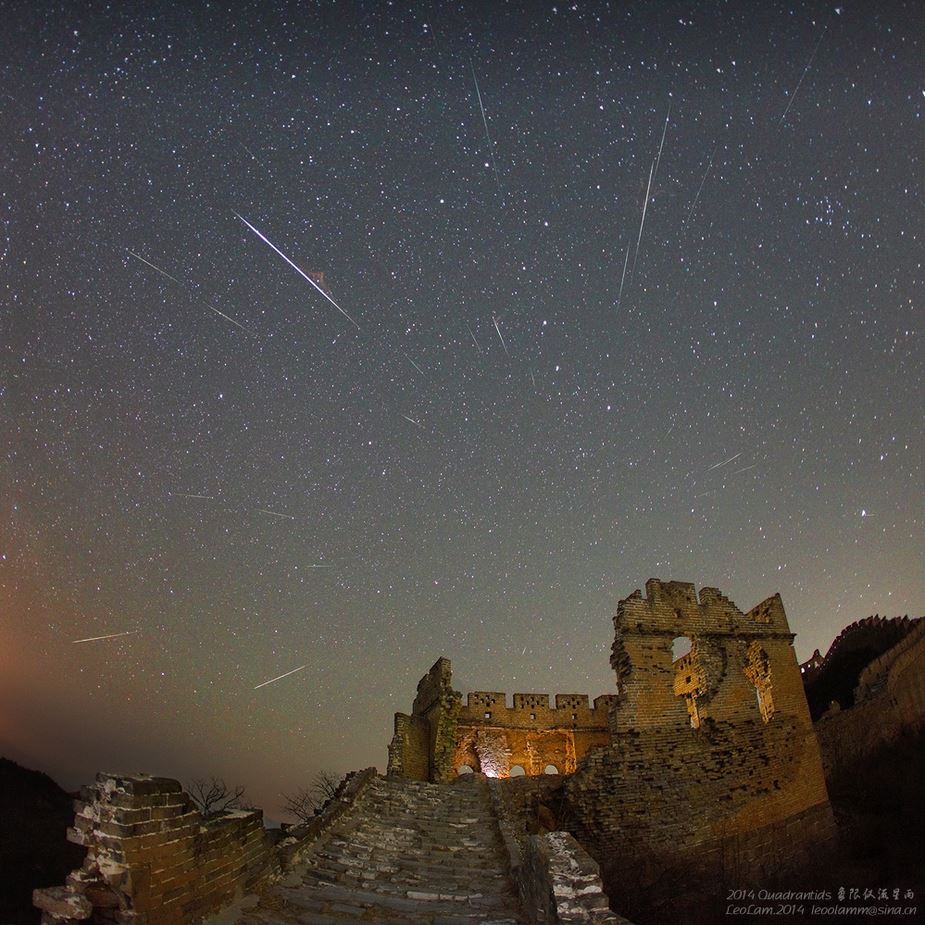Like every year, as the New Year just begins, skies give us a unique opportunity (for Northern hemisphere observers) to start it with a flurry of wishes: the Quadrantids meteor shower, one of the most active of the year, is on its way, and should peak on January 3rd, 2018!

A meteor shower with complex origin
Three main meteor showers are regularly active every year. These are the Perseids (in August), Geminids (in December) and… the Quadrantids! This last meteor shower is less famous than the two previous, principally because they are much harder to observe, due to the position of the radiant and the winter unfavorable meteorological conditions. But they are as active as them, and sometimes even more active: this will be the primary source of meteors during the coming nights, especially the January 02/03 and 03/04 ones.
Quadrantids activity started on December 28, and will last until January 12, with a maximum predicted on January 3rd, around 20 h UT. But activity of this meteor shower is very low during most of its activity period, and only raised a few hours around the peak of activity, which explains why it is easily missed when observing conditions are not favorable and do not coincide with it. Meteors belonging to this source are associated to several object, but the main meteoroid provider seems to be the potentially extinct comet 2003 EH1, which was discovered 14 years ago. It currently behaves like an asteroid, but must have released a lot of dust particles when it was active in the past. Another contributor to this meteor shower is the currently active 96P/Machholz comet, which also seems to participate to a lower level to the Quadrantid meteor activity. But the meteoroid and stream dynamics of this shower aren’t accurately known, which explains why the activity is harder to predict than for other showers like the Perseids or the Leonids.
Observing the Quadrantids
The radiant of the Quadrantids is circumpolar for most of Northern hemisphere locations: they are theoretically observable during all the night from northern observing sites, and not observable for Southern hemisphere observers. But its celestial position (the radiant lies between the constellations of Draco, Hercules, the Big Dipper and Boötes) makes it very low on the northern horizon during most of the first part of the night. It’s only after local midnight that it starts rising in the sky. Observations should thus be performed when it reached a useful elevation above the horizon. This year, the second issue will come from our satellite: the Moon will be full on January 2nd, and will thus be present in the sky during the whole night, highly reducing the number of meteor seen per hour. Be sure to find the most transparent skies not to increase this source of natural light pollution (what will do any cloud layer, even thin ones, fogs, or particles in the atmosphere). And try to hide our natural satellite with a mountain, a hill, a building, or any object, to avoid ocular tiredness and limit its nuisance during your observations. If you can’t hide it, do not face it, but watch in the opposite direction. Under those conditions, you may expect to see 20 to 30 Quadrantids per hour. on the morning closest to the Quadrantids maximum. Entry speed of meteoroids is 41 km/s: meteors will have a medium apparent speed, and a low one if observed close to the radiant or the horizon.
Ready to go? Then enjoy, and we expect you to make as many wishes as you can while watching this meteor display to well start the new 2018 year!




 You saw something bright and fast? Like a huge shooting star? Report it: it may be a fireball.
You saw something bright and fast? Like a huge shooting star? Report it: it may be a fireball.  You counted meteors last night? Share your results with us!
You counted meteors last night? Share your results with us!  You took a photo of a meteor or fireball? You have a screenshot of your cam? Share it with us!
You took a photo of a meteor or fireball? You have a screenshot of your cam? Share it with us!  You caught a meteor or fireball on video? Share your video with us!
You caught a meteor or fireball on video? Share your video with us!